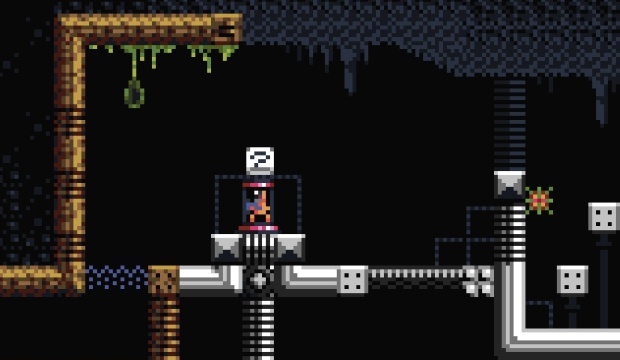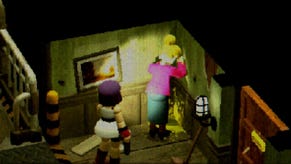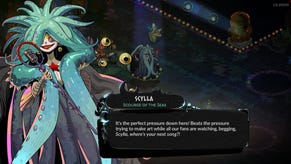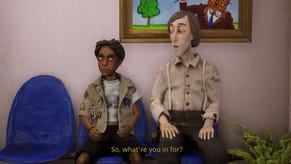Wot I Think: Environmental Station Alpha
Samus Metroid But Ridley Good
Environmental Station Alpha [official site] is a Metroid-alike pixel platformer that I've thoroughly enjoyed, right up until I didn't any more. And yet, I find myself recommending it. Here's wot I think:
For how long does a game need to be good for it to be a good game?
I have had a tremendous time with Environmental Station Alpha (ESA), engrossed into its Metroid-a-like exploratory platforming, enchanted by the vivid nature of its extremely low-fi pixel presentation, playing it in my spare time after playing it during my work hours – always a good sign. But now I’ve reached a point where I don’t consider it any fun at all. According to my save file I’m 39% of the way through. So is it a good game?
I think so. And for a fiver, I’ve had many, many hours of entertainment getting to this point. But is it good enough, to reach a point in a game I’ve been loving where I simply can’t carry on? It’s tricky to resolve.
I’ve come to the realisation that the term “metroidvania” is a pretty unhelpful genre definition, since Metroid and Castlevania are games that play quite so differently. Metroid is more focused on platforming, Castlevania more on combat and its RPG elements. What usefully unites them is the means of progress – revisiting areas in an ever-growing map with new abilities and the capability to access new places. Anyhoo, ESA is very definitely in the Metroid camp.
You play... a blob of pixels, visiting a space station that’s been abandoned, in an effort to learn what happened there. Thus begins the 2D side-scrolling platforming, in which you progress through distinct rooms to find new power-ups and skills, to reach a series of specific target areas, uncovering the plot as you go.
And it’s put together so very proficiently. The fine balance of Metroid games is often underestimated by those wishing to emulate them, but Arvi Teikari and Roope Mäkinen demonstrate a rare skill of precision. Much is simply blocked off by coloured blocks that can only be passed once a particular weapon or skill is found, but more natural environmental barriers also come into play. Adding, say, the joyous hookshot to your repertoire completely redefines how you approach any room, and of course the early addition of the always great double-jump sees so much more come into reach.
So yes, it passes that essential test of grappling hook/double-jump, that automatically makes any game up to 30% better. (Pay attention, Civilization.) And the movement is, well, perfect. Normally these games are slightly let down by platform edge detection, or slightly glitchy swings, or clipping corners – none of that here. That I’m only now realising how flawless the movement was is the best sign – I was never frustrated nor impeded by the controls, and that’s a rare treat.
The boss fights are also, rather amazingly, not awful. Early fights require quickly realised approaches, then it’s just a case of applying skill... to a point. But we’ll get to that once my opening enthusiasm is spent.
The layout is slightly imbalanced. Teleporters and save/healing points are for the most part ideally placed, but for the NW area of the game, where they’re oddly spare and require a little too much retreading. And I would love to see the in-game map show which areas are blocked by, say, red, gold and blue blocks, so that you can see which areas to head back for once the means to pass them is in your arsenal.
But yes, like I say, it’s an extremely skilful delivery of the genre, constantly offering that sense of progress as new tricks mean old areas are more easily thwarted... Until it isn’t.
I switched the robot defences back on. I had to. It was part of the progress. And at that point, the game’s no fun any more. All those old rooms that I only ever need to pass through to get to new bits are suddenly ludicrous death traps, tiresome to navigate, weakening me before I reach dangerous new territory.
And the boss fights – suddenly they’re incredibly difficult, requiring so many goes to defeat. And when I finally do, oh, it was the first of two stages. Not only do I have to beat that first stage again, but with most my health left for the even trickier second. And, oh, no, come on, it has a third.
So, I’m done with Environmental Station Alpha. And I’m okay with that.
It’s worth mentioning that during playing I contacted the developers a couple of times, because I’d become stuck in an area without the necessary skill. They’re fixing such things on the fly, with regular updates tweaking the game to remove exploits (accidental or deliberate). And they also tell me they will soon release an “easy” mode, with toned down enemy damage.
I’m not convinced that’s going to fix the game’s later issues. I’ve found the difficulty, until this point, pretty much where it should be. It’s a tough game, and that’s a good thing. But taking a bit more damage isn’t going to stop this suddenly becoming so fiddly and over-complicated.
Of course, such a hike in the challenge might be exactly what others are looking for. As much of a genetic abnormality as it might be, there are those who long for near-impossible boss fights and the like, and I imagine they will grumble the game is too easy until the point where I’ve given up. For me, making areas I’d previously mastered quite such a chore to get through is too big of a set-back, especially when the boss fights have become impassable barriers. (Confession: I cheated to get past the last one I encountered, because it was sodding impossible.)
But I’ve had such a brilliant time with ESA until now that I find myself happily recommending it. Five pounds is a great deal for the pleasure it brought me over the last week.
Environmental Station Alpha is on Steam for £5.













